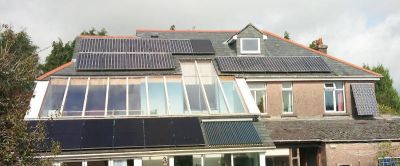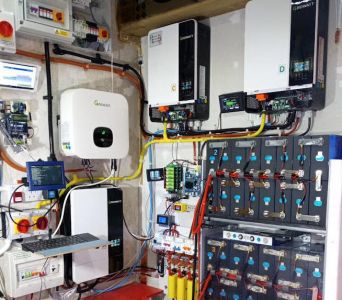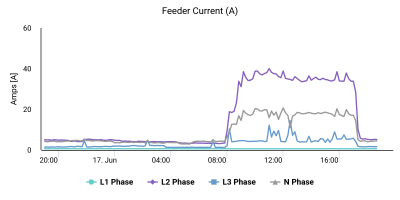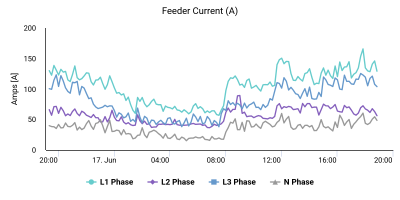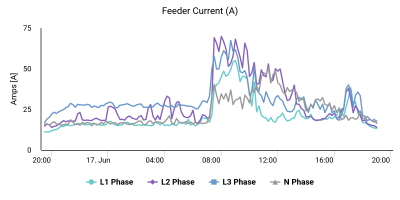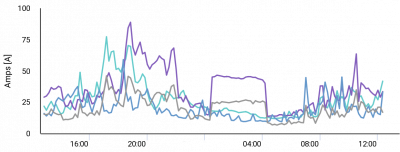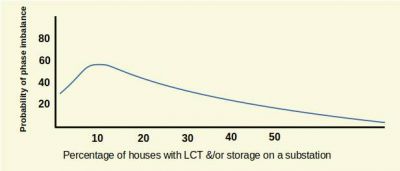[Sticky] Air source heat pump roll call – what heat pump brand and model do you have?
Forum Handle: Old_Scientist
Manufacturer: Samsung
Model: 12kW Gen 6 AE120RXYDEG
Type: ASHP
Arrangement: Mono
Area of Country: South Wales
Home Type: House
Size: Square Metres:
Insulation Level: 6/10 ??
Heat Loss Calculation: kW @ Amb. Temp, of: ?C
Type of Controller: 3rd party room Thermostat, TRV's on all rads.
Type of Control: Weather Compensation (Water Law) and Room thermostat
System Type: Radiators, single zone
Total Output of Heat Emitters: 23.95kW at delta 50C
Buffer Tank or Low Loss Header: 50L Volumiser, on return.
Secondary Pumps: 2, one on flow, one on return (on Joule pre-plumbed cylinder)
Solar PV System: 3kW (to be installed)
Power Diverter: No
Battery System: No
Samsung 12kW gen6 ASHP with 50L volumiser and all new large radiators. 7.2kWp solar (south facing), Tesla PW3 (13.5kW)
Solar generation completely offsets ASHP usage annually. We no longer burn ~1600L of kerosene annually.
Hi @old_scientist and thanks for the specs.
When was the heat pump installation completed?
Two things I'd like to pick up if I may:
1: As you have a thermostat and TRVs, is the ASHP actually cycling on/off according to your heat demand?
Or is it running continuously, but at lower speed during warm weather?
2: For what reason are you considering solar PV panels, and why 'only' 3kW?
Is that to do with available roof space, or a limitation imposed your S. Wales DNO (National Grid Electricity Distribution)?
Thanks.
Save energy... recycle electrons!
Posted by: @transparentHi @old_scientist and thanks for the specs.
When was the heat pump installation completed?Two things I'd like to pick up if I may:
1: As you have a thermostat and TRVs, is the ASHP actually cycling on/off according to your heat demand?
Or is it running continuously, but at lower speed during warm weather?2: For what reason are you considering solar PV panels, and why 'only' 3kW?
Is that to do with available roof space, or a limitation imposed your S. Wales DNO (National Grid Electricity Distribution)?Thanks.
@transparent - ASHP install was completed last week.
As with many others, I am now a member of the over-sized ASHP group. I had estimated we needed somewhere in the region of 5.8-7.2kW ASHP, but as is common the MCS survey over estimated for our needs.
My aim was to run constantly, at as low flow temps as possible. We do have over-specified emitters which will help. I only have a couple days of data so far. On the first day, ambient was 15C and the house had dropped to 17C so we turned on the heating, but when setting a LWT of 30C (at 15C ambient), the heat pump was never able to get that low. With all TRVs open, and the room thermostat set high to force running, I saw LWT of 32 and return flow temps of 29-30, so a delta T of only 2-3C. After a couple hours the house was warm enough, so I turned it off. If I had set it to cycle on LWT it would have cycled constantly, I guess (I have configured it only to turn on/off by room stat, not to allow cycling when flow temps are too high, so it just runs constantly, for now, until turned off by the room thermostat to prevent cycling, and finds it's own minimum LWT/return temp). I will probably end up needing to set the WC curve to ~32-34C at 15C ambient rather than the 30C I was aiming for, as that is as low as she seems to want to go (plus I may as well have the extra heat as it's using 0.9-1kW regardless).
On day two, ambient was 11-12C. LWT was initially 34C (delta T again only 2-3C), but I had set the room TRVs to "3" in the bedrooms. When I fully opened all TRVs, LWT dropped to 33C which was about where it should have been on the weather compensation curve, but again the house was up to temp after a couple hours so we again switched off.
I cannot vary flow rates (no PWM pumps), so I'm stuck at ~26L/min and low delta T values of 2-3C. The lowest power draw I've seen is around 900W once stabilised, so I guess it's putting out around 4kW heat when I probably only need 2kW or less at the moment. These warmer days will only require a short burst of heat, even at the lowest achievable flow temps (normally I'd expect the heating to be off in mid June!)
Running for 2-3h at as low LWTs as possible is actually not too bad - I can run it during cheaper slots on Agile and put the required heat into the house relatively cheaply, then switch off.
The install was part of the ECO4 scheme, so we have had Internal Wall Insulation (IWI), pitched roof insulation, ventilation, ASHP with all new rads and TRVs, and solar - all at no cost to us. The downside is we do not get to choose. I begged them to consider the 8kW Samsung, but they wouldn't budge (they have to go with the MCS heat loss survey figures to get the government funding so there is absolutely no room for negotiation).
They have spec'd the solar - 3.6kW of panels on a 3kW inverter. I have loads of south facing roof space so it's a shame they have not optimised better. My understanding is that DNO approval is not required up to 3.6kW, hence why that is commonly installed (ideally I would have liked 4kW panels on a 3.6kW inverter, but beggar's cannot be choosers). It's probably not worth my while paying for scaffolding to add 1-2 extra panels, and upgrading the inverter to a 3.6kW model for the small increase I'd see. I would love a battery, but the numbers just do not seem to add up on the payback last time I looked.
The good news is the ASHP installers seemed really competent and I am happy with the install, other than the over-sizing. They have replaced all our old plastic micro-bore piping with 22mm copper dropping down to 15mm at the tees for each radiator, and have installed all new oversized (and additional) K2 Stelrad radiators. I should be able to run some pretty low flow temps in winter with most of our winter weather sitting in the 0-10C window.
Samsung 12kW gen6 ASHP with 50L volumiser and all new large radiators. 7.2kWp solar (south facing), Tesla PW3 (13.5kW)
Solar generation completely offsets ASHP usage annually. We no longer burn ~1600L of kerosene annually.
Posted by: @old_scientistThe install was part of the ECO4 scheme [....] they have to go with the MCS heat loss survey figures to get the government funding
Oh, wonderful!
So ECO4 is another MCS approved scheme which deviates from good science.
Why am I not surprised? 🤔
Posted by: @old_scientistMy understanding is that DNO approval is not required up to 3.6kW
Sort of... it's approved by default because the appliance will have G98 certification, which is registered with the Electrical Networks Association (ENA).
In your case the installer will have contacted NGED for a different reason.
The Heat-pump requires approval as LCT (Low Carbon Technology).
That's because heat-pumps and EV chargers cause significant losses at the local substation due to phase-imbalance and harmonics.
NGED's RIIO-ED2 licence agreement with Ofgem requires them to reduce those losses over the next 5-years.
But I can see little evidence of that target being tackled yet.
I have a partnership agreement with NGED which allows me access to their network maps and data-sets.
That allows me to see how much LCT apparatus is connected to each local substation.
This includes your area of course!
I too had an initial measly installation of a few PV panels in order to get an MCS number when I took part in a storage battery trial 5 years ago.
That was accompanied with a 3.6kW Growatt inverter which was far short of what was required.
Once the trial had started I then added a glorious roof-full of PV panels. 😀
There are now 4 arrays, supplying around 6.4kW.
But I also ditched the 8kW factory-built battery.
As soon as the trial was over, out came the screwdrivers/wrenches and I recovered the wall to put to better use.
There are other topics here discussing DIY battery installations:
A beginner's journey into DIY home energy storage is definitely worth a read, whether or not you have solar panels
as is Seplos Mason DIY Kit which describes a steel enclosure approach into which you place the cells
and Battery system to make my heat pump cheaper to run which might be a target of interest to you.
I'm assuming from your Forum-ID that you won't have much difficulty following the technical bits of the discussions!
Save energy... recycle electrons!
@transparent, have read your post several times and cannot detect the size of your installed ASHP. I am interested because mine is definitely oversized
That's because I don't yet have a heat pump @kena 😉
... and when I do get one, it won't be fitted by an MCS-accredited installer.
I'll be doing it myself!
Save energy... recycle electrons!
@transparent thanks for the info and links - I will certainly have a read through. I am definitely not adverse to the idea of DIY battery storage.
Two of my immediate neighbours have just had ASHPs installed on the same scheme - I wonder what impact that may have on our local substation?
I'm just starting to get my head around some of the calcs and formula for heating systems (all new to me), and so far am just pleased that my (albeit very limited) observed data matches my calculations!
Samsung 12kW gen6 ASHP with 50L volumiser and all new large radiators. 7.2kWp solar (south facing), Tesla PW3 (13.5kW)
Solar generation completely offsets ASHP usage annually. We no longer burn ~1600L of kerosene annually.
Ah... the proximity of LCT installations is not something which NGED pays much attention to.
I know that because I asked a couple of network engineers about it at an NGED Workshop on Friday!
I think it's more important than they suppose.
Twice I've 'complained' to OVO about the results from trials which they ran, because they completely overlooked any grid losses.
If they spread the test sites randomly across the country, then they neatly side-step the issue.
There are very few local substations (11kV input) which have any monitoring.
I have access to data from 16, which NGED have kindly kept operational when the OpenLV Project completed its period of Ofgem funding.
Here's an overly-simplistic example from today 17th June'24, of a feeder which supplies only two phases to a commercial establishment.
The graph shows the current drawn per phase, sampled at 10-min intervals:
Since Phase-L1 has no load connected, there is bound to be phase imbalance.
Most of the power drawn between 9:00 - 17:00 is on Phase-L2, with a peak of 40A at 11:00 (coffee break!).
That causes current to flow in the Neutral.
A feeder on a housing estate with a number of heat pumps operating looks more like this:
The ripples are almost certainly due to the heat-pumps cycling on/off.
That's why they continue at the same mark-space ratio right through the night.
And here's a feeder supplying fewer houses on a couple of roads in South Wales.
There's heavy demand around breakfast time.
But quite a few of these houses have solar-panels, particularly those on Phase-L1.
See how little current they need to draw from the grid once the sunshine breaks out around 10am.
The effect is so pronounced that an hour later, the current in the neutral is almost as high as Phase-L2.
Notice once again the amount of regular cycling on Phase-L2 right through the night.
That'll be a single-phase heat-pump in one of those houses.
Running a heat-pump from a battery is much 'kinder' to the grid, even if you don't supply that battery from any solar panels.
When the battery is being re-charged from the grid during 'cheap rate' periods, it takes a slow, steady current.
That re-charge time should be spread over as many hours as possible, which will help to reduce phase imbalance.
Depending on your particular scientific skill-set, perhaps you can find a way to test if your neighbours having heat-pumps installed are on different phases to you!
In practice the line-engineers will tap into whichever conductor is on the top of the bundle when they splice-in the single-phase supply to a house.
Rarely is that phase recorded.
The worst offenders for phase imbalances are EV chargers.
They all tend to get switched on shortly after midnight, depending on the tariff offered by each Supplier.
You can clearly see a single charger being used overnight on this Feeder:
The 1st charger connected to a feeder will clearly cause imbalance.
The second one could even make that worse, if both happened to be on the same phase.
Statistically you'd need to have at least 10% of houses with EV chargers before you'd expect to see phase-balance start to be reasserted.
Save energy... recycle electrons!
Forum Handle: Declan90
Manufacturer: Vaillant
Model: Arotherm+ 12 kW
Type: ASHP
Arrangement: Mono (Double Fan)
Area of Country: Leicestershire
Home Type: House + Detached Annexe
Size: Square Metres: 166 m2
Insulation Level: Scale of 1 to 10 possibly? 6 (Loft & Cavity wall insulation, mixture of build dates)
Heat Loss Calculation: 11 kW @ Amb. Temp, of: -3.7C
Type of Controller: OEM Room Thermostat per zone (UFH and Rads separated), aiming for full W/C in Winter. TRVs in bedrooms + Annexe only.
Type of Control: Weather Compensation
System Type: Predominantly Radiators with small area of UFH
Total Output of Heat Emitters: 13 kW @ 46C Flow Temp
Buffer Tank or Low Loss Header: N/A
Secondary Pumps: Vaillant VDM unit for UFH supply
Solar PV System: 8.48 kWp
Power Diverter: No
Battery System: 20.72 kWh
Hi Mars,
My soon to be installed system will be a:
9 KW PANASONIC AQUAREA T-CAP MONO-BLOC J GENERATION
Handle: johnmo
Maxa i-32V5 6kW
Type: ASHP
Arrangement: 2 zones UFH, only one zone can call for heat, one zone in house other zone in garden pod. Both heating and cooling in floor. Updated to single zone with UFH in house and fan coil in garden room. Pure WC with single thermostat in house as a limit stop not a controller. Heating and cooling enabled.
Area of Country: NE Scotland
Home Type: House plus summer house
Size: Square Metres: 192m2 plus 17m2
Insulation Level: excellent new build
Heat Loss Calculation: 3.9kW @ Amb. Temp, of: -5C for both buildings
Type of Controller: builtin to ASHP, plus limit stop thermostat in house set to 20.5 for cooling and 23 for heating and pod
Type of Control: Weather Compensation (curve) for heating, fixed temp for and cooling
System Type: UFH and fan coil
Total Output of Heat Emitters: matched to heat demand
Buffer Tank or Low Loss Header: BT, LLH or No - no
Secondary Pumps: no
Solar PV System: yes
Power Diverter: yes
Battery System: No Yes 13.5kW
Forum Handle: Burtis
Manufacturer: Midea
Model: MHC-V6W/D2N8-B R32
Type: ASHP
Arrangement: Monoblock
Area of Country: Southampton
Home Type: Terrace House 3 bed
Size: Square Metres: 85?
Insulation Level: 5
Heat Loss Calculation: kW @ Amb. Temp, of: ?C
Type of Controller: Single Thermostat
Type of Control: Weather Compensation
System Type: Radiators
Total Output of Heat Emitters: kW
Buffer Tank or Low Loss Header: Buffer
Secondary Pumps: 1
Solar PV System: No
Power Diverter: No
Battery System: No
Will update when I find all the info 😅
- 26 Forums
- 2,396 Topics
- 54.3 K Posts
- 339 Online
- 6,077 Members
Join Us!
Worth Watching
Latest Posts
-
RE: Fan is clipping ice build up from the front of unit.
@bontwoody Yes, it’s been nasty. Driving rain and sleet...
By Papahuhu , 21 minutes ago
-

RE: Running from backup generaor in powercut?
Here's the Power Cut map from Cornwall at 23:00 last ni...
By Transparent , 1 hour ago
-

RE: Recommended home battery inverters + regulatory matters - help requested
@jamespa - your diagram with my additions ...
By Transparent , 1 hour ago
-
RE: New Mitsubishi Ecodan 11.2kW installation - L9 errors and maybe more
Hi @jamespa - thank you again. Yes, I think it pro...
By anotherdaveuk , 2 hours ago
-

RE: ASHP Energy Consumption: Aira 12kW heat pump
Indeed. Present ToU tariffs are based on national sup...
By Transparent , 2 hours ago
-
RE: Help me keep the faith with my air source heat pump installation
@adamk I'm observing my own system at low temperatures ...
By dr_dongle , 3 hours ago
-

RE: Free Ecoheat Heat Pump Install
@deltona Yes older houses are problematic like that, bu...
By bontwoody , 22 hours ago
-
RE: Radiator sizing sanity check
As I mentioned early on the cost of supplying and fitti...
By JamesPa , 1 day ago
-
RE: Advice for a novice on Mitsubishi Ecodan 6kW
I hadn't spotted that there were two pumps in the UFH (...
By JamesPa , 1 day ago
-
RE: Setback savings - fact or fiction?
Never assume it makes an ass of u and me! You need the...
By JamesPa , 1 day ago
-
RE: Electricity price predictions
Great point, one of the key ones in my chat with Octopu...
By Batpred , 2 days ago
-

RE: New Fogstar 15.5kWh upright solution
Let me point out that there are many Chinese suppliers ...
By Transparent , 2 days ago
-

RE: Weather compensation- why you should use it
@majordennisbloodnok — The Two Ronnies Mastermind sketc...
By cathodeRay , 2 days ago
-
Just realised that this image of the cylinder cupboard ...
By Sheriff Fatman , 2 days ago
-

RE: Rodents! A word of warning for heat pump owners
Two thoughts: 1: Let's ask @david-s if Primary Pro in...
By Transparent , 2 days ago
-
RE: Solis S6-EH1P8K-L-PLUS – Why I Chose It and What I’ve Learned So Far
In the diagram below, I describe my understanding of th...
By Batpred , 2 days ago
-
I need to have a look out for it. I know IBM feeds some...
By Batpred , 2 days ago
-
-
RE: Daikin Atherma ASHP Cycling 6 Times an Hour?
Thanks for your reply. Yes that's a good idea to try a...
By John Marshall , 2 days ago
-

RE: Hot water heating in parallel with space heating
An external heat exchanger would need a pump which woul...
By bontwoody , 2 days ago

